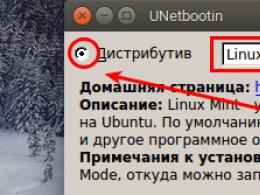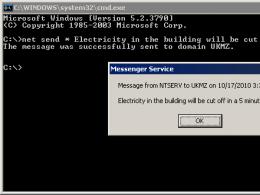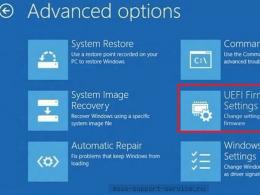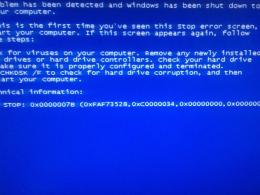How to remove the back cover of a hp pavilion dv6 laptop. Step-by-step instructions for disassembling and cleaning the HP G62-b51SR laptop
This article is about my laptop. HP COMPAQ Presario CQ61.
Let me start by saying that I have been using it for about 3-4 years. Recently, he began to get very warm, especially when playing computer games. Often the thermal protection worked and it turned off. It got even worse when I got a job in a furniture factory with my laptop. Machine tools worked around the clock in the workshop and small wood particles in the form of dust and sawdust flew in the air. All this garbage clogged the radiator and cooler for 6 months. As a result, the laptop began to heat up so much that even cook scrambled eggs on it, but it made noise like a Soviet “rocket” vacuum cleaner.
I need to disassemble the laptop, blow out the radiators, clean the cooler, a friend told me and offered his services for 1.5 thousand rubles, but a toad strangled me and I decided to do everything myself 🙂
that day came, I woke up with a clear plan in my head - to disassemble my laptop! He poured himself some tea, sat down opposite the patient and remembered how in childhood he loved to disassemble and assemble everything, but only after assembly there were extra details 🙂
1. First of all, I got into the toolbox, started looking for various Phillips screwdrivers, one of them fit perfectly. We turn the laptop over, pull out the battery, unscrew all the screws.

2. Remove all plastic plugs and see if there are any other screws inside that can hold the plastic case of the laptop. In my case, there was nothing, I found only 5 screws under the battery. One of the screws holds the CD drive, if you have unscrewed all the screws, then try to pull out the CD-ROOM, it just pulls out like on a sled. Pull out the CD-ROOM - you can look inside :).

3. At this stage, I thought that the top of the laptop would open conveniently, I would blow the cooler and that would be the end of it, but no. I poked around with a screwdriver for a long time, the plastic latches slowly opened, I was on my way to success. But then I realized that the case was held by a few more screws somewhere in the middle of the laptop. After sitting and thinking, I realized that somehow I need to remove the keyboard. He put his hand in the place where the CD-room stood and tried to gently press on the keyboard from the inside. The keyboard was latched, with a slight physical impact, the upper part of the keyboard was completely unfastened, and the lower one sat in the grooves from which it later came out.

4. I pulled out the keyboard with grief in half, now I see that it is connected to the motherboard. Here, too, I hesitated for a couple of minutes. The first thing I did was try to remember what goes where, although there is nothing complicated and it is impossible to confuse. The problem was that I couldn't disconnect it 🙂 And all I had to do was pull the black lock and the cable can be disconnected very easily.

5. Well, all the keyboard is disconnected, hooray! Oh, how many crumbs and debris fell out of the keyboard. Rubbed / cleaned it with a damp brush, now it looks like new, not like in the photo 🙂

6. Opa, I immediately see a few screws, which means who held the rest of the case. Let's open it up and check it out!

7. Here you go, another piece of plastic has detached, it also has a cable to the motherboard, which is responsible for turning the computer on / off and for the Internet wi-fi. The train comes from those two buttons in the middle. Here, too, you need to remember where this cable is connected. Nothing complicated, in principle you will not get confused. If you forgot, you can simply attach this part to the laptop and see where the cable will lie.

8. Here is a closer photo. Do not forget about the little black latches that need to be pulled back and the cable will easily detach.

9. Okay, 2 parts have already been removed, and here it is the main piece of plastic under which all the insides are hidden 🙂 I also suffered with it. the latches near the touchpad did not want to open in any way (in the middle - mouse control). With a little pressure, the upper case completely detached.

10. Raise the case to the top. It was not possible to remove the plastic to the side, the power wires coming from the monitor interfered. I didn’t deal with them anymore, as I got to my goal, namely the cooler (orange arrow in the photo below). Looking into the cooler, I saw a kilogram of dust, wool, hair. All cleaned, blown, rubbed.

After I started to panic, how to collect everything back. Decided to calm down, went for some more tea, then came back and collected everything. Turned on the computer and voila - it works 🙂
It stopped basking, no longer makes noise and works like new! 🙂
If you decide to disassemble the laptop, here is my advice: the main thing is not to rush, inspect everything carefully, if something does not open, do not break, look, twist and see either a screw or a latch.
If you started reading this text, then I can assume that most likely you decided to disassemble your HP Pavilion dv6-6b52er (TPN-W104) laptop in order to clean the cooling system, and maybe even upgrade, or replace certain components.
But no matter what goal you pursue, you still have to partially or completely disassemble the laptop. And just here, this guide to disassembling the HP Pavilion dv6-6b52er laptop will be very useful to you, in which each action will not only be described, but also shown with illustrative examples.
If you are going to do this for the first time, I want to immediately give you a few recommendations:
- When disassembling a laptop, you need to be extremely careful and not tear parts that you cannot detach by force, most likely, in such cases, you will need to check if you forgot to unscrew one or two screws somewhere else.
- It is also extremely important to follow all the recommendations for disassembly and the order of their implementation, which will be given in the article, so as not to mess things up and aggravate the situation by breaking a few necessary latches or damaging laptop components.
- And finally, if you are going to remove the radiator, then stock up on thermal paste in advance, since after cleaning and installing the radiator back, it will need to be replaced.
To begin with, this is enough, I think now you can proceed with the disassembly.
Disassembling the bottom of the HP Pavilion dv6-6b52er laptop case
Whatever laptop you disassemble, I can assure you that any disassembly process begins with turning off external power sources - this is primarily charging and, of course, the battery.
By moving the lever to the left, if you look at the laptop from the same side as shown in the photo, disconnect the battery.
Now, in order to remove the cover, under which the HDD, RAM and Wi-Fi adapter are usually hidden, we need to use the same lever that we used when removing the battery, although this time we move it in the opposite direction and release this element of the case from latches.

Remove HDD next (HDD), unscrewing the four screws that secure the hard drive to the laptop case and disconnecting the cable from the motherboard, then remove the drive without much effort.

Remove the DVD drive by removing the single screw holding it in place and pulling the DVD drive out of the way until it is completely in your hands.

Further, there is a controversial point whether it is worth removing the Wi-Fi adapter and RAM, as some masters say that this can not be done, but as practice has shown, sometimes screws can be hidden under the RAM that will hold the case or keyboard, so I recommend always removing these boards, besides, returning them back is not difficult.
RAM is disconnected how and on most laptops, by releasing the board from the mounts holding them, which need to be moved apart.
Regarding the Wi-Fi adapter, then you need to disconnect two wires and remove the screws holding it, and then simply remove it from the socket.

Again, armed with a screwdriver, begin to unscrew all the screws that can hold the bottom and top covers of the case and the keyboard, as well as other elements of the laptop.
You can easily see their location in the picture.

Disassembly of the upper case in an HP Pavilion dv6-6b52er laptop
Having unscrewed all the screws, we turn the laptop over and try to remove the keyboard using a thin plastic object, such as a bank card, pry the edge of the keyboard with it and carefully passing the card along the perimeter, release the keyboard from the fasteners holding it.

But that's not all, you don't need to pull it out right away, because there is a cable under it that connects to the motherboard, which must also be disconnected by lifting the fixed tab up.

After that, you need to remove seven screws under the keyboard and disconnect three cables so that we can easily remove the front of the case.

Picking up the plastic card again, we begin to disconnect the lower part of the case from the upper one, trying to insert the same card between them and carefully release them from the latches, passing along all sides of the case.
If all the latches have been disconnected, then the cover should be in your hands, and in front of you you will see the motherboard and cooling system.
Removing the HP Pavilion dv6-6b52er laptop motherboard
By the way, I want to draw your attention to the fact that this is a vivid example of the fact that sometimes a laptop still needs to be cleaned from dust and other debris.

Having reached the motherboard, we need to disconnect a few more cables and disconnect the remaining connectors from the connectors. You can find where and what is located by looking at the photo, in addition, on the motherboard itself, you will also need to unscrew one more screw.


Now you can safely start removing the motherboard by lifting it up. I just want to note that under the bottom, on the left side, there is another connector waiting for you, which also needs to be disconnected.

Well, after the motherboard is in your hands, do not forget to disconnect the last connector holding it, which is located at the top of the right side of the motherboard.

After, you can proceed to disconnect and clean the cooling system. But here I want to draw attention to the fact that after you remove the heatsink, you will have to replace the thermal paste without fail, so take care of this in advance.
Putting a radiator on old thermal paste is highly discouraged, as this can cause the laptop to overheat and lead to not the most pleasant consequences.
The radiator is removed by unscrewing the screws, in the order indicated on the radiator itself, but in order to remove and clean the cooler, unscrew the remaining fasteners on its cover.

Now, using a brush or vacuum cleaner, remove all dust and debris from the radiator and cooler blades.

After that, you can start assembling the laptop, which, as you understand, is carried out in the reverse order, that is, now you can climb up the article and start assembling your HP Pavilion dv6-6b52er laptop.
Hello friends! Today we will learn how to disassemble the HP Pavilion dv6 laptop, namely the dv6-6051er model.
First of all, we remove the battery and the compartment that covers the hard drive and RAM.
Next, unscrew all the bolts, as shown in the photo below (red), and also disconnect the hard drive and a small wi-fi board (orange).

Now disconnect the DVD drive. Under it are 3 more bolts.

Under the hard drive there is a "mean" bolt, which is often overlooked. Be careful and unscrew it too.


Do not forget that the keyboard should not be strongly pulled up when removing, as you risk damaging the cable. Gently tilt it towards you and disconnect the cable.

The next step is to unscrew the bolts that are under the keyboard and disconnect the cables.

Now we hook something thin and hard on the top of the laptop and remove the panel.


Half the way has been completed and now there is little left for a full-fledged instruction " how to disassemble hp pavilion dv6 laptop".
Before us is an HP dv6-6051er laptop board. We understand further. We unscrew 1 bolt and disconnect the remaining loops.

Lift up the soundbar slightly so that the motherboard can be lifted.

The last thing that holds the board is the power wire. To remove it, you need to lift and turn the motherboard.
IMPORTANT! Do not pull on the wires, otherwise you risk the connector remaining in the connector, and the wires will be in your hands.
Use some tool (for example, a screwdriver) for auxiliary purposes.

Now the question is how to disassemble hp pavilion dv6 laptop" can be considered closed. The fee is in front of us.
However, if you need to clean the cooling system, then we disassemble further.

Now we clean the cooler from dust, the surface of the chips from the old thermal paste and apply a new one.
- The presence in the body of the copied (processed) material of an active link to the site www.site
- The link must be open for indexing by search engines
If this is your first time disassembling a laptop, we recommend that you pay attention to the article "". This article has recommendations that will help you avoid common mistakes during the disassembly process.
The HP Pavilion dv6 3000 Series is based on the same chassis as the HP Pavilion dv6 3000 Series models: dv6-3000er, dv6-3010er, dv6-3015sr, dv6-3015sw, dv6-3016er, dv6-3020er, dv6-3020sy, dv6- 3022sr dv6-3025er dv6-3025sy dv6-3026er dv6-3030er dv6-3030sy dv6-3055sr dv6-3056er dv6-3057er dv6-3060er dv6-3064er dv6-3065er dv6-3070er dv6-3072er 3090er dv6-3101er dv6-3102er dv6-3103er dv6-3104er dv6-3105er dv6-3106er dv6-3120us dv6-3121er dv6-3122er dv6-3123er dv6-3124er dv6-3125er dv6-3126er dv6-3140ec 3153er dv6-3153nr dv6-3154er dv6-3155sr dv6-3156er dv6-3170sr dv6-3172sr dv6-3301er, dv6-3302er, dv6-3304er, dv6-3305er, dv6-3327 sr, dv6-3328sr, dv6-3332er, dv6-3334er, dv6-3335er - these models have the same disassembly process.
How to clean dust from an HP Pavilion dv6 3000 Series laptop
If the laptop overheats during operation and turns off abruptly, this is most likely due to overheating of the cooling system. The reason for this is the accumulation of dust on the radiator. If you do not clean the cooling system in time, this will lead to damage to the motherboard in the laptop. You can fix this problem yourself by repeating all the steps shown in the video below. The information provided in our video instructions makes it possible to clean the laptop from dust yourself at home. The necessary repair tools can be purchased at the end of the page.
Replacing the keyboard in an HP Pavilion dv6 3000 Series laptop
Keyboard repair in most cases is caused by spilling tea or coffee on the surface, and as practice shows, there are two outcomes:
- Remove the keys from the keyboard and clean their mechanisms with distilled water or alcohol using a brush.
- Replacing with a new keyboard (if cleaning the buttons did not help), then the liquid got on the lower layers with films where the tracks are located.
P Pavilion dv6 3000 Series laptop matrix replacement
The matrix is the most fragile part of the laptop, often when it falls, the matrix breaks and it is impossible to restore it, only replacing it with a new one. There are different types of matrices, they differ in diagonal and the number of “pin” connectors (30pin / 40pin). In order to choose the right matrix for your laptop, you need to know the part number of your broken screen, according to which the same new or other compatible matrix model is selected. In the video below, you can see the replacement of the laptop screen and also find out the part number of the compatible model.
P Pavilion dv6 3000 Series reverse assembly
After completing the disassembly and repair, this video will help you reassemble the laptop to its original state.
We disassemble the laptop HP Pavilion dv6.
This guide is in two parts. In this, the first part, we will look at disassembling the main parts of the laptop. In the second part, we will look at disassembling the display module and replacing the LCD screen.
A warning
This article is not a guide to action! You are solely responsible for the collection and disassembly of your device.
Many manufacturers do not carry warranty obligations if the device has been disassembled by the user. If you do not want to lose the warranty for your device, check the terms of the warranty in the documentation or with the device manufacturer.
Tools Used
|
Before you begin disassembly, be sure to turn off the laptop and remove the battery.
Remove the 6 screws from the hard drive and memory module covers.
One of the screws (marked with a green circle in the picture) also secures the DVD drive.

Remove both covers and pull the DVD drive out of the laptop.

Lift the hard drive module and disconnect the hard drive cable from the connector on the motherboard.

Both memory modules are installed in a compartment at the bottom of the laptop case.
You can pull out both memory modules. But in our case, let's leave them on the motherboard.
The non-volatile memory (CMOS)/system clock battery is also located under the memory module cover, and can be easily removed and replaced without disassembling the entire laptop.

Unscrew the 5 screws securing the panel above the keyboard (indicated by yellow circles in the picture below).
Unscrew the 4 screws securing the keyboard (marked with red circles).

Pry up the edge of the bezel above the keyboard and continue to remove it with your fingers.
Be careful! There are two cables running from the panel above the keyboard to the motherboard. They are shown in the next picture.

Slide the panel above the keyboard towards the display so that you can reach the three screws securing the keyboard.
Remove the three screws securing the keyboard.

Lift up the top of the keyboard as shown in the following picture.

Slide the keyboard toward the display so you can reach the flex cable connector under the keyboard.
Before removing the keyboard, you need to bend the cable lock and pull the keyboard cable out of the connector.

To open the connector, bend the brown tab up 90 degrees.

The following picture shows the keyboard cable connector in the open position.
Now you can pull the keyboard cable and pull it out of the connector.

Remove the keyboard.

Disconnect the two cables coming from the panel above the keyboard (mentioned in step 6) from the motherboard.
The connectors on these cables do not have latches. Simply pull on the cables and pull them out of the connectors.

Remove the panel above the keyboard.

If you plan to remove the display panel, you will need to disconnect both antenna cables from the wireless network card.
Loosen the screw securing the wireless network card and remove the card.

Disconnect the two cables (one of them is the video cable) from the motherboard.
Pull the antenna cables through the hole in the bottom panel.

To disconnect the video cable, simply pull up on the black tab.

Remove the 4 screws securing the monitor hinges.

Lift and remove the monitor module. How to replace the LCD screen, we will look at.

Remove any remaining screws from the bottom of the laptop.
One of the screws (circled in green in the picture) is located in the DVD drive bay.

Remove the 4 screws securing the speaker module.
Disconnect the speaker cable from the motherboard.

Lift and remove the speaker module.

Remove 5 screws securing the top panel.
Disconnect the touchpad cable from the motherboard.

Start separating the top of the case from the bottom.

Remove the top case.

Disconnect 3 cables from the motherboard.
In the HP Pavilion dv6 laptop, the power supply connector is not soldered to the motherboard. The power supply connector is attached to the wires and can be easily replaced without soldering.

Remove the screw securing the motherboard. It is located in the lower right corner of the motherboard.

Carefully lift up the motherboard on the right side.

Remove the motherboard from the case.

You will see that the cooling module is attached to the back of the motherboard.
Now you can clean the radiator and fan.
You can also replace the cooling module in case of a malfunction.

Disassembly completed. Reassemble in reverse order.







